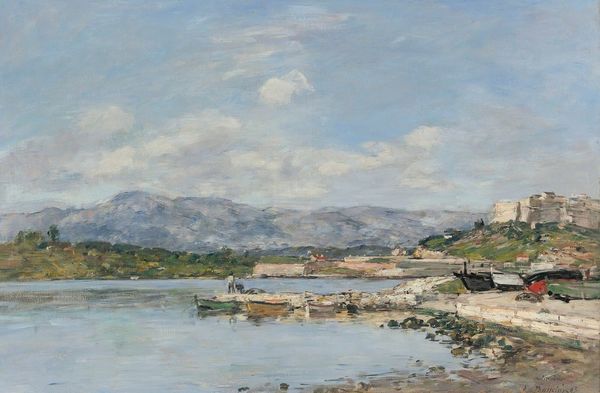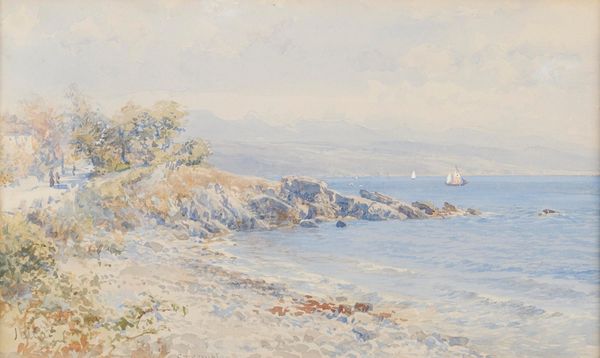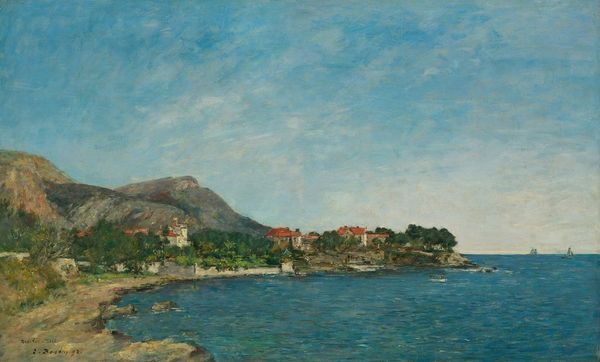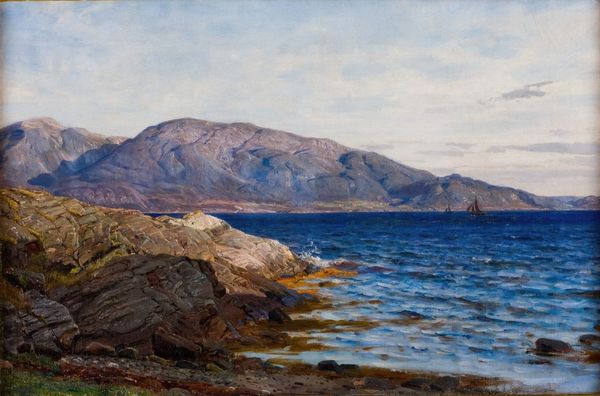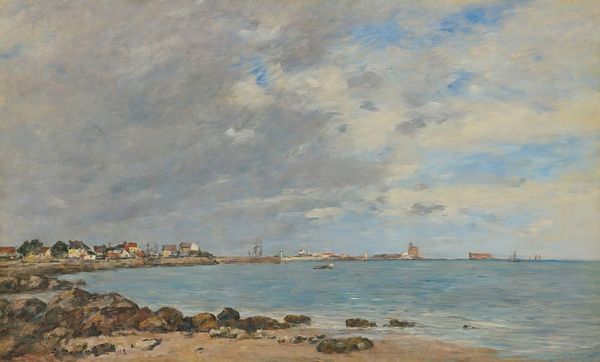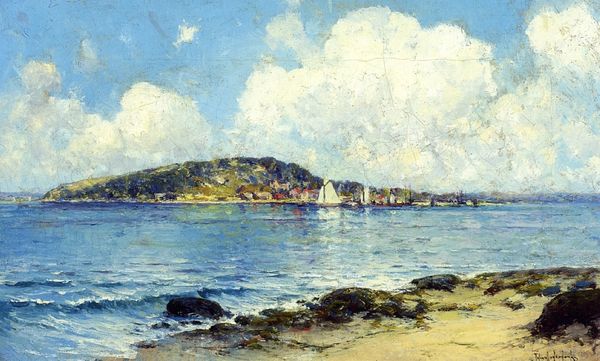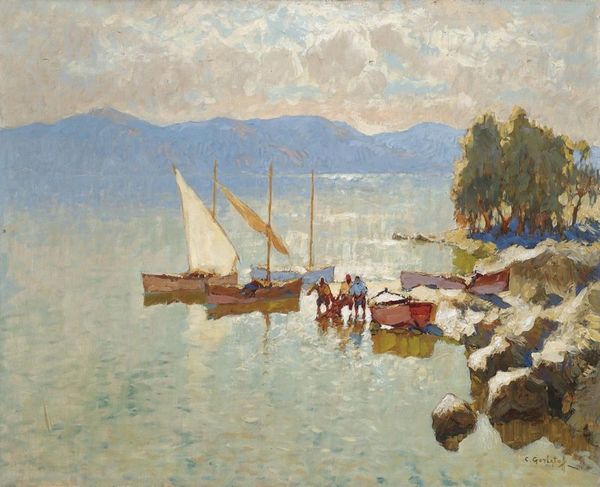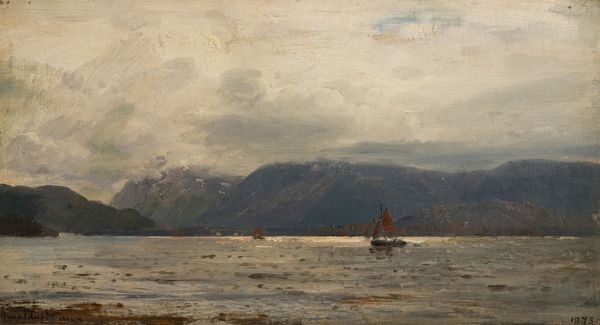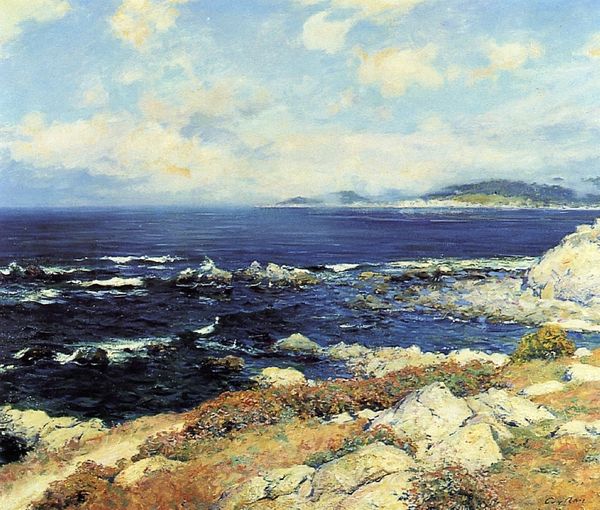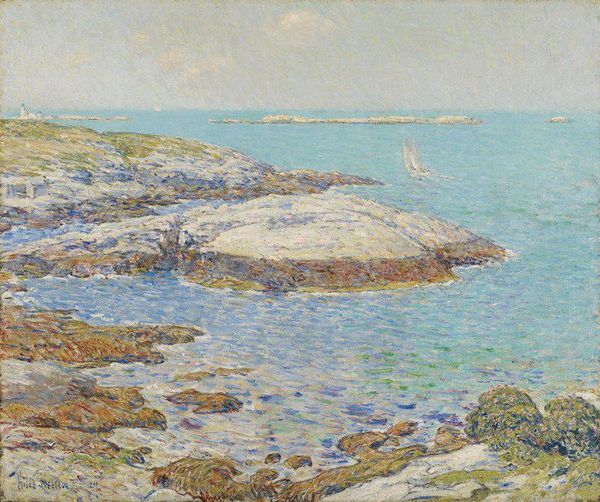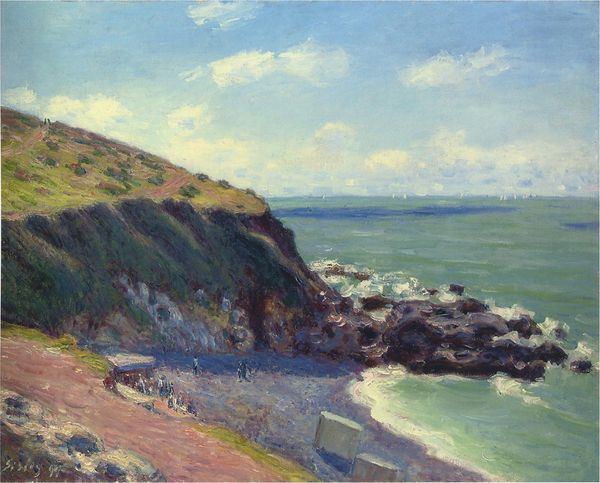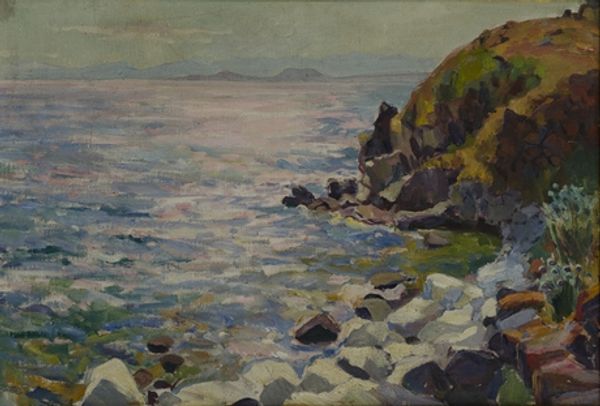
Copyright: Public Domain: Artvee
Curator: Here we have Eugène Boudin’s "Antibes, la baie," painted in 1893. Immediately, one is struck by the shimmering, opalescent quality of the water. Editor: It feels undeniably pleasant, almost utopian in its serenity. I'm curious about this particular coastal view at a time of considerable social upheaval in France and beyond. Who did this calm landscape serve, and who was excluded from it? Curator: A sharp question. The formal elements suggest an exploration of light and atmosphere typical of Impressionism. Boudin uses delicate brushstrokes to capture the subtle gradations of color in the sky and sea. Note, too, how the composition is carefully structured, with the rocky foreground leading the eye towards the distant horizon, that provides balance to the whole. Editor: Yet, the tranquility might mask the socio-economic realities of coastal life in the late 19th century. Coastal regions were often sites of both leisure for the wealthy and labor for the working class. What does the absence of laboring figures signify in this scene? Is it an intentional omission that reflects the tastes of Boudin's bourgeois patrons? Curator: Or perhaps Boudin was simply interested in the aesthetics of the natural world, abstracting forms and light with an undeniable romantic underpinning. There's a strong emphasis on the pure visual experience and a mastery of color, line and the application of impasto creating a truly textured surface. The horizon line itself appears more of an emotive device rather than any sort of social document. Editor: I would suggest the romantic element could provide a method of aestheticizing power dynamics by showing such purity and overlooking more complicated social commentaries of coastal locations. What, in effect, is the painting “hiding” or rather overlooking? But indeed the textured paint adds another level to that commentary. Curator: Well, I see a scene that explores, as I said, pure artistic representation and visual delight—an artist fully engaged with his craft and a movement defining an era. I maintain the painting's formal elements take precedence. Editor: And I still see it providing commentary—one of subtle erasures and silent social markers that reveal more than first meets the eye. Curator: A perfect dichotomy! I think we can leave it here, and trust viewers make up their own minds!
Comments
No comments
Be the first to comment and join the conversation on the ultimate creative platform.
